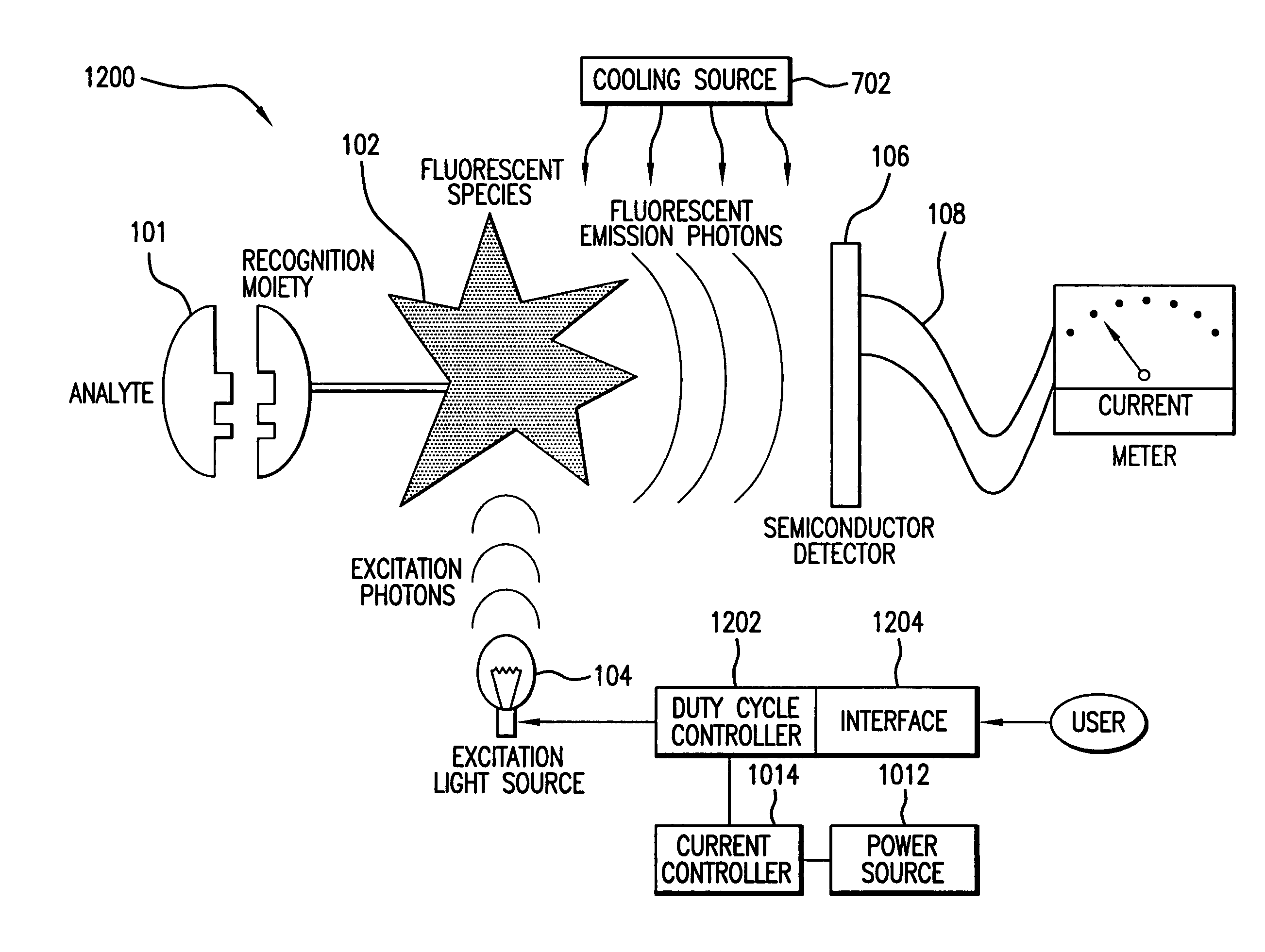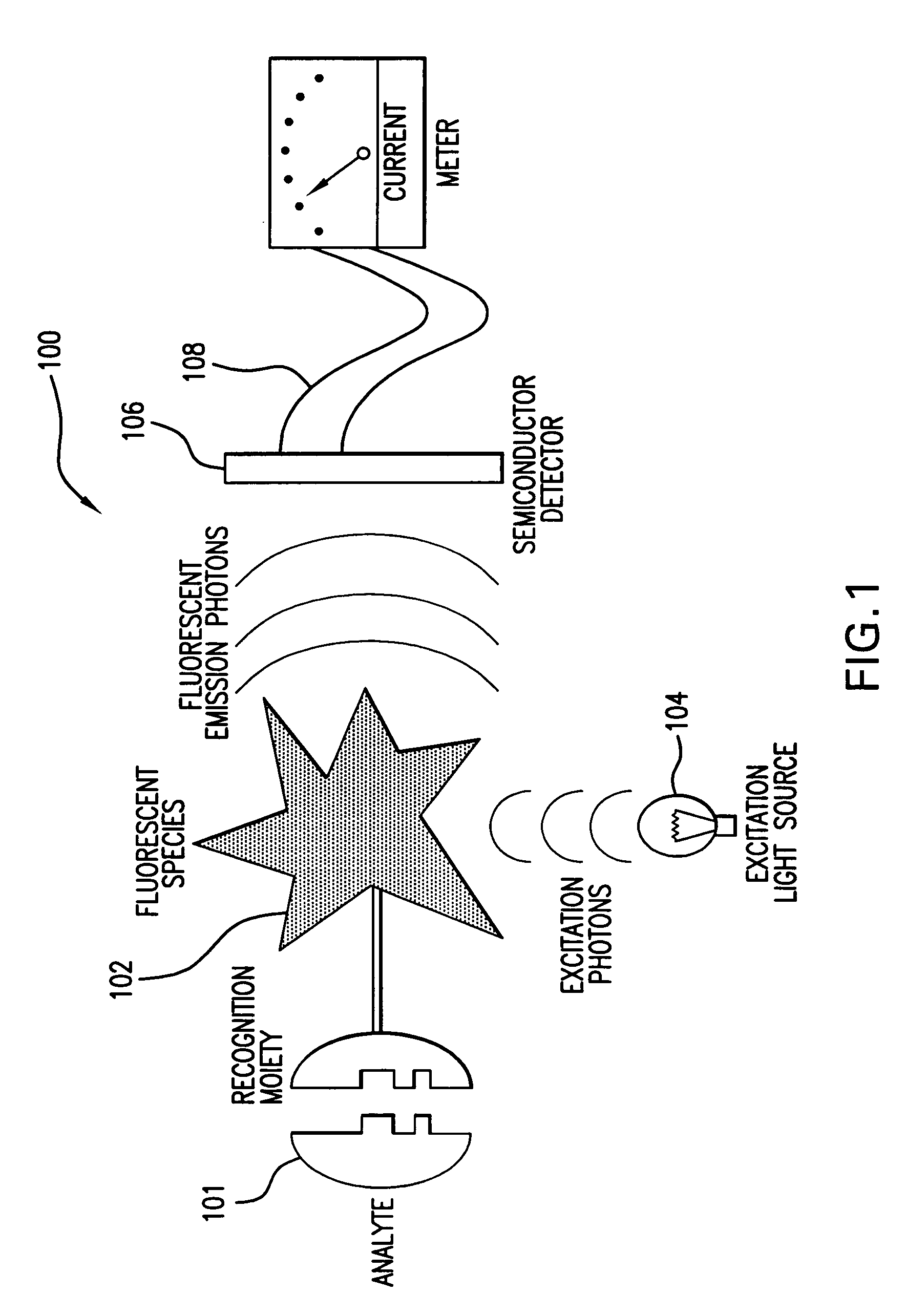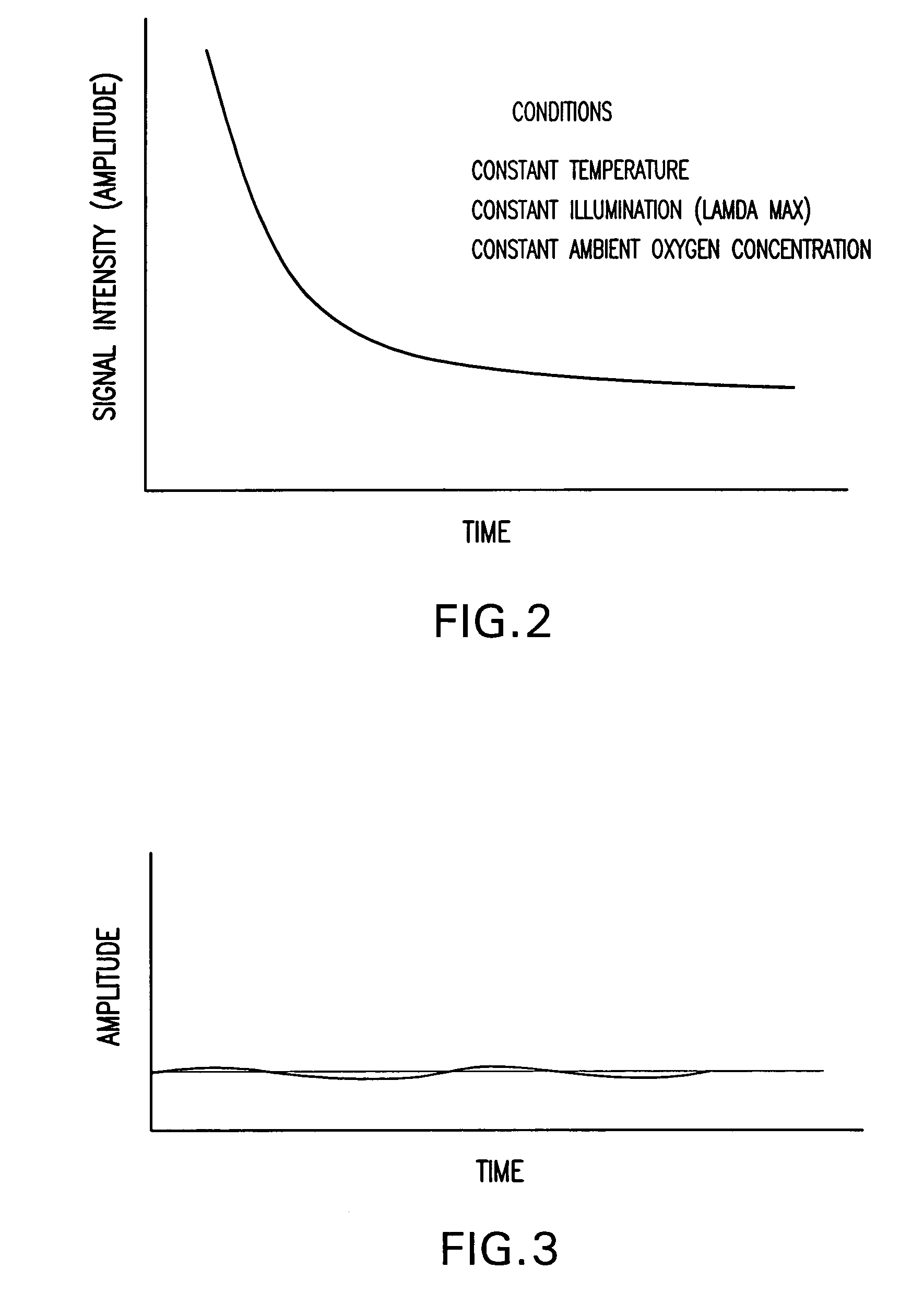Systems and methods for extending the useful life of optical sensors
a technology of optical sensors and useful life, applied in the field of sensors, can solve the problems of limited useful life of the sensor that utilizes fluorescent indicator molecules as a component to recognize and convert the presence of substances into measurable signals, and the useful life of the fluorescent indicator molecules is typically no longer fluorescent, so as to increase increase the useful product life of the optical sensor. , the effect of increasing the useful life of the indicator molecules
- Summary
- Abstract
- Description
- Claims
- Application Information
AI Technical Summary
Benefits of technology
Problems solved by technology
Method used
Image
Examples
Embodiment Construction
[0045]FIG. 1 shows a schematic illustration of a representative conventional optical sensor 100 for detecting the presence or concentration of a substance 101. Sensor 100 includes indicator molecules 102, a light source 104, and a photoelectric transducer 106 (or “photodetector 106”). It can be seen from the graphic in FIG. 1 that the indicator molecules 102 are a key element in converting the presence and concentration of the substance to a measurable signal (e.g., a measurable electrical current output 108 from photodetector 106).
[0046]As discussed above, photo-oxidation causes the indicator molecules to be the “weakest” component of sensor 100. That is, photo-oxidation causes the indicator molecules to degrade sooner than the other components of sensor 100. The surrounding components, such as light source 104 and photodetector 106, have useful lifetimes typically exceeding ten years. However, the indicator molecules can be degraded under typical operating conditions within hours ...
PUM
| Property | Measurement | Unit |
|---|---|---|
| drive current | aaaaa | aaaaa |
| drive current | aaaaa | aaaaa |
| drive current | aaaaa | aaaaa |
Abstract
Description
Claims
Application Information
 Login to view more
Login to view more - R&D Engineer
- R&D Manager
- IP Professional
- Industry Leading Data Capabilities
- Powerful AI technology
- Patent DNA Extraction
Browse by: Latest US Patents, China's latest patents, Technical Efficacy Thesaurus, Application Domain, Technology Topic.
© 2024 PatSnap. All rights reserved.Legal|Privacy policy|Modern Slavery Act Transparency Statement|Sitemap



